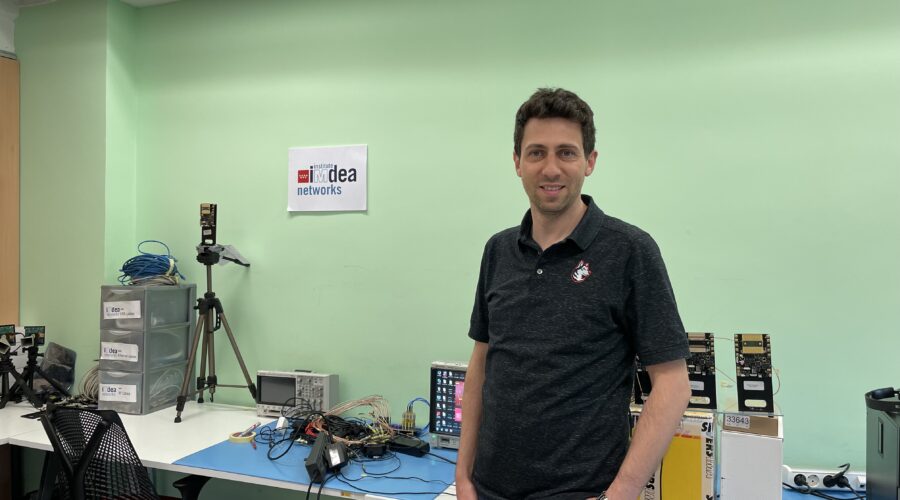IMDEA Networks

Claudio Fiandrino tells us about his experience in the USA as a Fulbright scholar
The grantees are selected with transparency criteria, based on academic and professional merit and leadership potential
20 October 2022

Artificial Intelligence (AI) will be at the heart of beyond fifth-generation (5G) as well as future sixth-generation (6G) mobile networks infrastructure, allowing for much swifter and more effective decision-making in scheduling, control, and orchestration operations of the end-to-end communication systems. The vast majority of AI models are usually regarded as black-box. In other words, it is very hard to understand the underlying operation and the reasons why the models have taken certain actions. In recent years, the interest in promoting trust and interpretability to AI has gained momentum, but in the context of mobile networks, it is still at the early stages of conceptualization.
With the aim of promoting interpretable and trustworthy use of Artificial Intelligence (AI) in next generation mobile networks, Claudio Fiandrino, a Post-doc Researcher at IMDEA Networks, decided to focus on the Radio Access Network (RAN). For this to happen, Claudio applied and was awarded a double mobility grant, José Castillejo (ESP) and Fulbright (USA). The latter is internationally known to contribute quality enhancements and excellence with global mobility. The grantees are selected with transparency criteria, based on academic and professional merit and leadership potential. Besides, they have the good fortune to study, teach and research in another country but, foremost, to exchange ideas and contribute to finding solutions to challenges and interests of global reach. A Fulbright visit is not only academic. The enrichment program, Fulbrighters are encouraged to undertake activities that allow learning about the United States, its society, culture, and customs.
The RAN is at the forefront of mobile communication networks as it provides direct interaction between users and the network. Currently, there is an ongoing tremendous effort towards enhancing the RAN. The objective is to bring the existing non-flexible monolithic units implementing all the layers of the protocol stack to a system based on disaggregated, virtualized, and software-based components built by multiple vendors and that are interoperable through open and standardized interfaces. The Open-RAN (O-RAN) Alliance is driving such efforts and, besides openness, the second pillar around which the O-RAN vision builds upon is intelligence. Through a centralized abstraction layer, programmable software components can run routines with closed-loop control to optimize RAN operations.
“I knew that one of the top groups working on the use of AI in the O-RAN context is Tommaso Melodia’s group. Starting a new research line is always difficult, thus it was crucial for me to get in touch with a solid group, with both profound expert knowledge and resources. Specifically, I am referring to the wireless platforms available at Northeastern University, like the Colosseum wireless network emulator. If experimenting with AI is complex, experimenting with wireless networks is not easy either, hence using these platforms would provide me with the capability of programmatically controlling the wireless experiments. In turn, this would give me the possibility to fully concentrate on building new tools and techniques to analyze AI from interpretability and robustness standpoints”, Claudio says. So he immediately applied for the mobility grants, thanks to which he was able to learn first-hand about the research being carried out there in his area of study.
During his four-month visit to the United States, Claudio studied one of the AI-based solutions developed by the group of Tommaso Melodia. Such solution uses Deep Reinforcement Learning (DRL) for resource allocation in the context of network slicing and was developed with [OpenRAN Gym], a unified O-RAN compliant experimental toolbox that consists of experimental wireless platforms like Colosseum, softwarized RAN, data collection and control framework and O-RAN control architecture. “The initial results on the explainability aspect are promising: we were able to synthesize explanations about the behavior of the DRL agents and observe the consistency in decision-making across network slices in a wide range of experiments. Now, having such insights is useful, but how to make use of them effectively is the next challenge ahead.”, he concludes.


Recent Comments